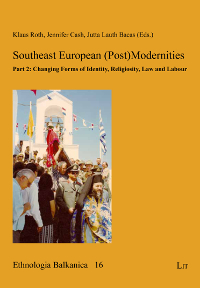Revival of Processions in Contemporary Montenegro. Litiyas of Kuti and Their Transformation since the 1990s
Revival of Processions in Contemporary Montenegro. Litiyas of Kuti and Their Transformation since the 1990s
Author(s): Vesna Vučinić NeškovićSubject(s): Anthropology
Published by: LIT Verlag
Keywords: Montenegro; religion; Bay of Kotor; Kuti; socialism; post-socialism; Easter; Vidovdan; Trinity; identity;
Summary/Abstract: The early 1990s were a period of religious revival, but also of turbulent breakup of the Socialist Federal Republic of Yugoslavia. By 1995, when the war officially ended in Croatia and Bosnia-Herzegovina, all the former Yugoslav republics had already become independent states, with the exception of Serbia and Montenegro, which redefined their political unity in 1992 and stayed together within the Federal Republic of Yugoslavia. In 1995, the village of Kuti within the Bay of Kotor revived their traditional Easter Procession, and since 1999, they have done the same with the Vidovdan Procession on St. Vid’s Day. In these public religious celebrations, the official Serbian Orthodox ritual merged with the popular village practices remembered from the pre-socialist period. The central part of these celebrations is the ritual circumambulation of the village, which comes after the morning liturgy and is followed by a feast organized for all the participants. This paper will deal with how the Easter litiya (Vaskršnja litija) in Kuti became the central gathering (sabor) of that part of the Bay population which searched for the ways to express the Serbian component of their identity vis-à-vis the exclusively Montenegrin one which was being created by the Montenegrin political elite that came to power after 1998. It will also follow how the meaning of litiya changed in accordance with the political situation until 2006, when a unilateral referendum for independent Montenegro was successfully realized, and further up till the present, when the Serbian population was placed in the position between a former constitutive nation and the new ethnic minority.
Journal: Ethnologia Balkanica
- Issue Year: 2012
- Issue No: 16
- Page Range: 246-272
- Page Count: 28
- Language: English
- Content File-PDF

